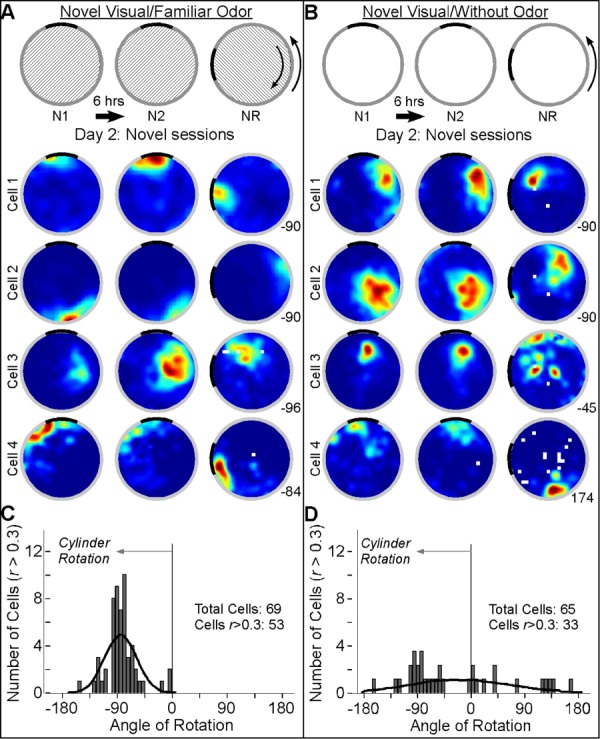Figure 6.

The removal of familiar odor cues significantly disrupted visually guide rotations. The long-term stability and the ability to follow novel visual cues, even in the presence of preserved odor cues (A, NV-FO), was comparable to that observed in the visual-alone control condition from Day 1 (Cells 1–4; see Fig. 4A for comparison). In contrast, the limited proportion of cells from NV-WO mice that exhibited long-term stability (B, Cells 1–4) appeared to rotate largely randomly. The inability to rotate with the novel visual cues is illustrated by the distribution of best-fit angles of rotation (D), which differed significantly from that of cells in the presence of Novel Visual/Familiar Odor cues (C), as well as both sets of cells from Day 1. [Color figure can be viewed in the online issue, which is available at http://wileyonlinelibrary.com.]
